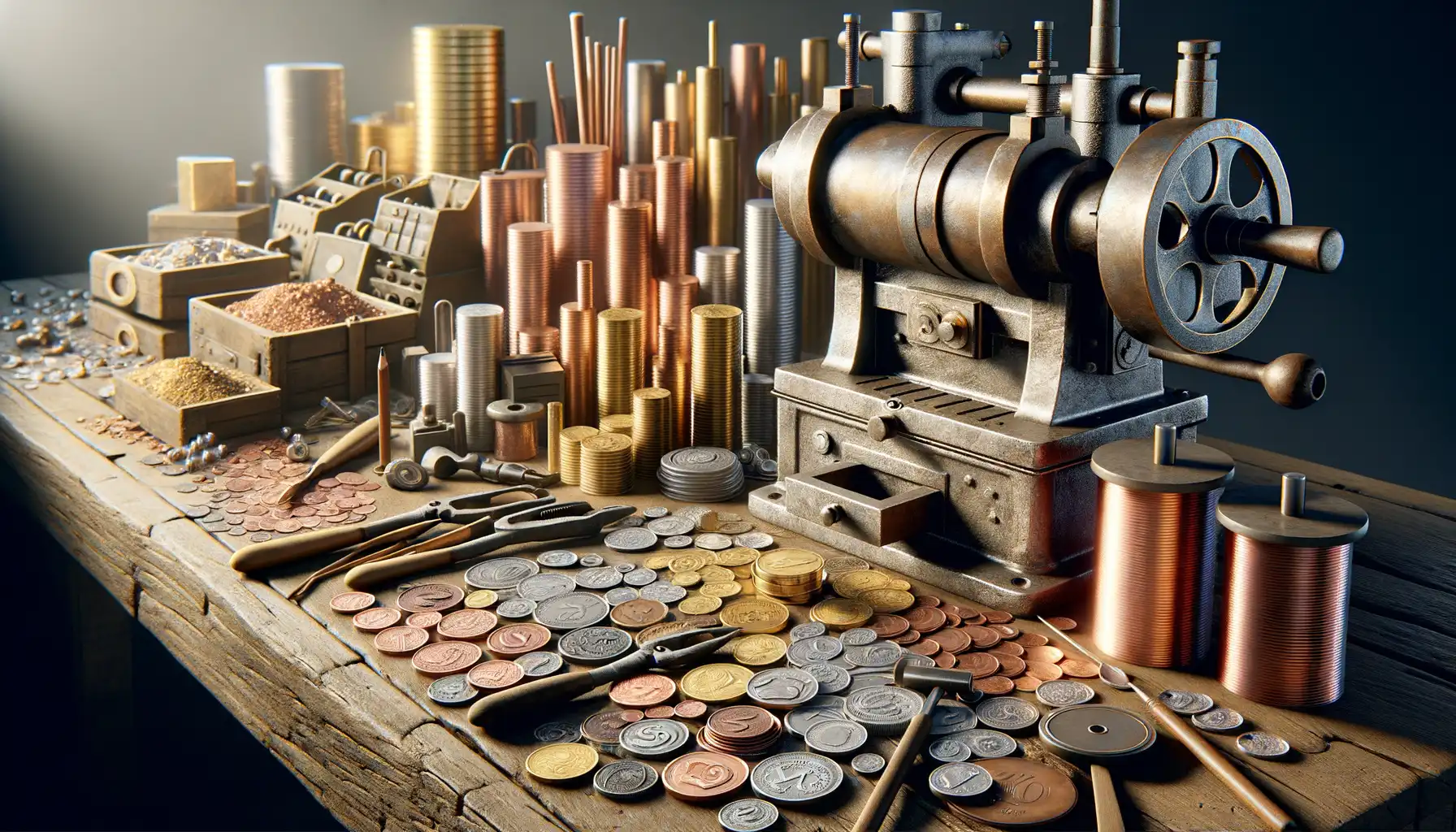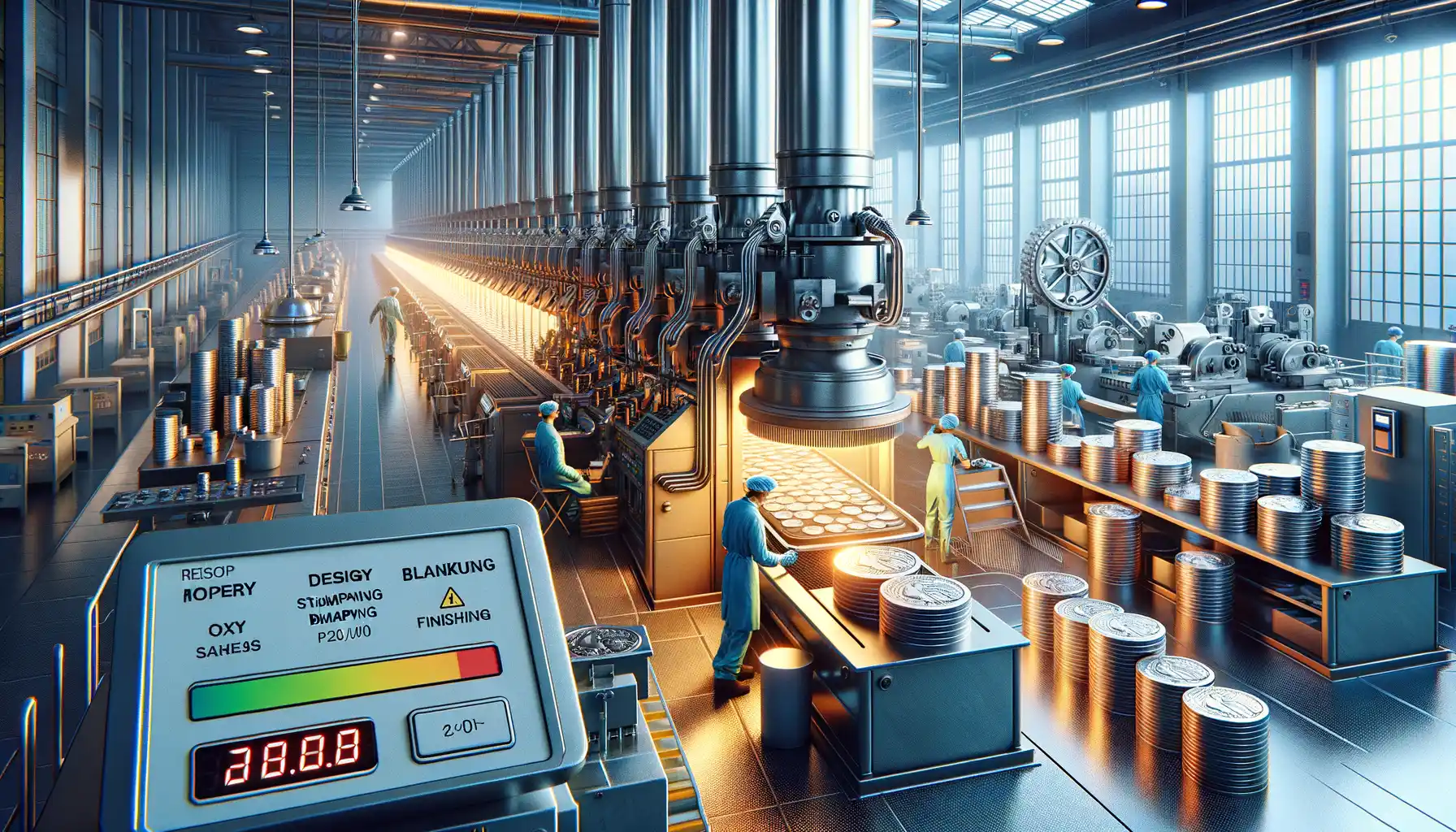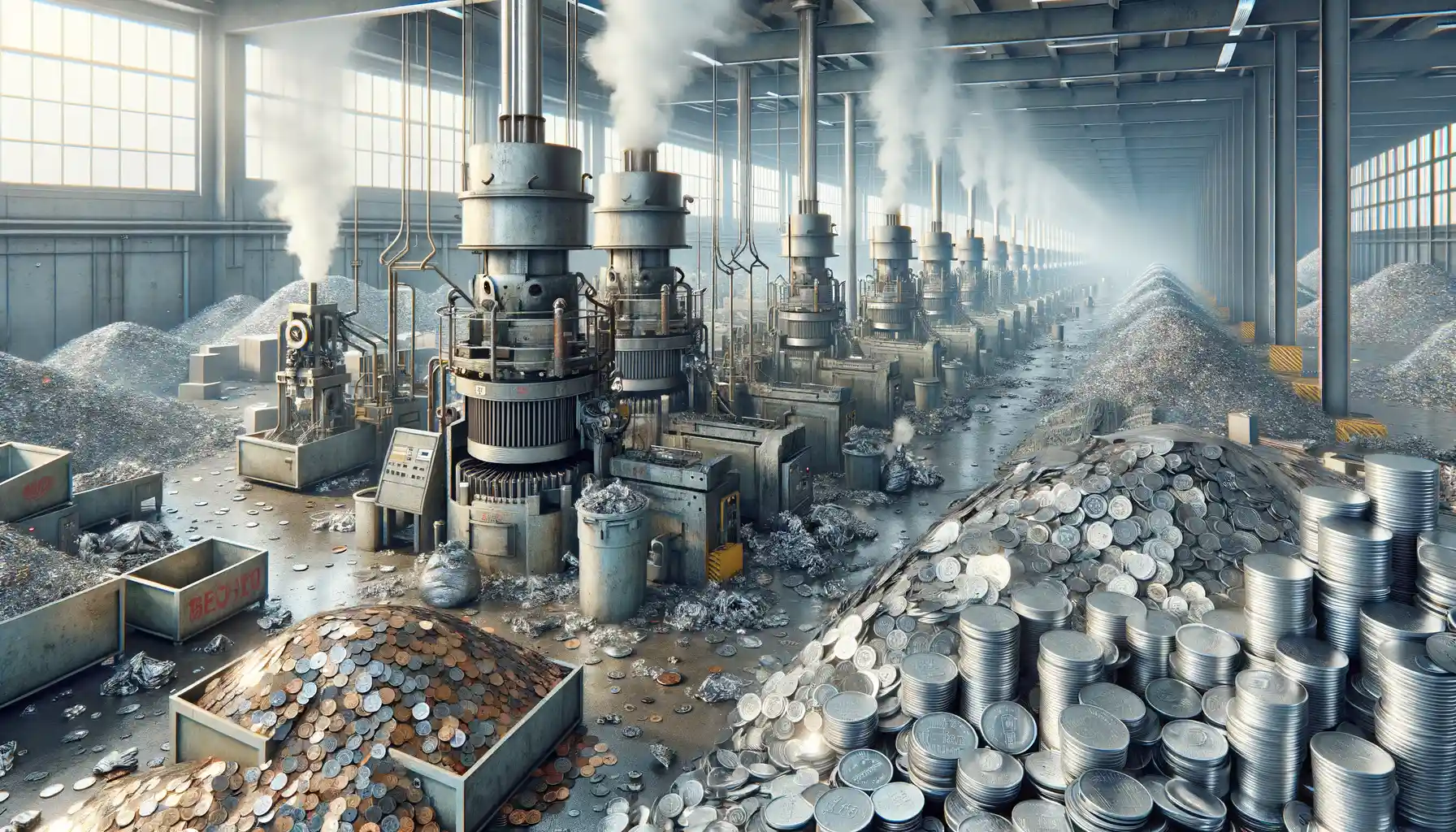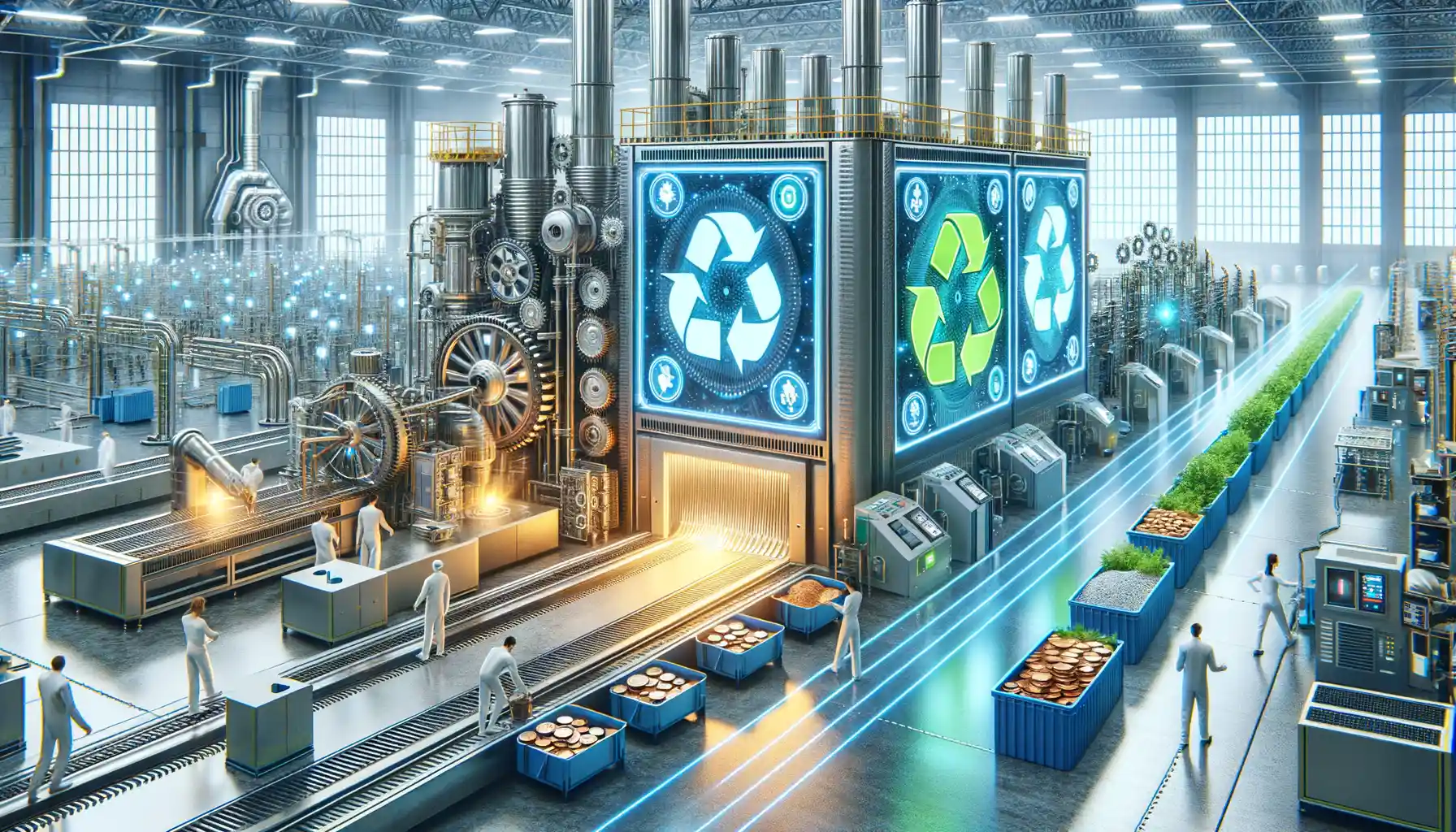Overview of Coin Production and Environmental Concerns
Have you ever held a gleaming coin in your hand and wondered about its journey? That small disc of metal, so ordinary in appearance, carries an extraordinary environmental story. Let’s dive into the fascinating and complicated world of coin production—a process that’s not as innocuous as it seems.
From Raw Metal to Minted Marvel
The life of a coin begins with raw materials, like nickel, copper, and zinc, mined from deep within the earth. These metals are smelted, refined, and alloyed before they’re rolled into thin, glimmering sheets ready for stamping. Sounds straightforward, doesn’t it? But here’s the catch: the process generates significant greenhouse gas emissions during mining and melting.
Imagine the colossal machines tearing through the earth to extract these metals or the staggering amounts of energy needed to refine them. It’s a harsh reality hidden behind your pocket change.
The Hidden Costs of Coin Production
Many people don’t realize that producing coins isn’t just about shaping metal—it’s about energy consumption, waste management, and pollution control too. Here are some environmental challenges tied to minting your pennies and dimes:
- Energy-intensive processes: Smelting and refining metals consumes massive amounts of electricity and fuel.
- Waste generation: Scraps, chemical byproducts, and industrial runoff pose serious disposal challenges.
- Pollution risks: Mining operations contribute to water contamination and soil degradation, harming ecosystems.
While coins may be small, their ecological footprint is anything but. Next time you hear the cheerful clink of change, consider its hidden price tag—a cost paid not in dollars but in environmental well-being.
Raw Materials Used in Coin Manufacturing

The Metals Behind Your Pocket Change
Ever wondered what gives coins their shine, weight, or even that distinct clinking sound in your pocket? It all starts with raw materials—the essential building blocks of every coin you use. At the heart of it, metals like copper, nickel, and zinc take center stage, each chosen for their durability and aesthetic appeal. But there’s more than meets the eye here—these materials are more than just lifeless elements; they’re pieces of a planet’s history being shaped into our everyday economy.
Copper, often called the “workhorse metal,” is a staple in coin manufacturing. Its reddish-orange hue whispers strength and resilience. Meanwhile, nickel adds that silvery shine and scratch resistance—it’s a charmer but not without cost. This material takes energy-hungry methods to extract and refine, leaving behind its environmental shadow. And let’s not forget zinc, the unsung hero hiding at the core of many coins like pennies. While cheaper and plentiful, mining it leaves scars on landscapes far and wide.
- Gold and silver: Reserved for commemorative or high-value coins, but incredibly energy-intensive to mine.
- Alloys: The secret blend that fine-tunes coins to withstand millions of hands, vending machines, and time.
Small as they seem, these metals come with massive stories—transforming from raw earth to shiny treasures, but at an environmental price worth rethinking.
Energy Consumption During Coin Production Process

The Energy Hungry Machines Behind Coin Creation
Ever wondered how much energy it takes to turn raw metals into shiny coins? It’s not just a simple “melt and mold” process. Each step is like running a marathon for machines, and boy, do they demand their fuel!
The journey begins with large industrial furnaces. These beasts consume an extraordinary amount of electricity or gas to melt metals like nickel, copper, and zinc. Imagine heating a metal to over 2,000°F—that’s hotter than lava—and keeping it there long enough to shape it!
Then comes the stamping process. Picture massive mechanical presses punching out coins at lightning speed—thousands every hour. These presses guzzle electricity like parched travelers in a desert. And let’s not forget the finishing touches: polishing, engraving, and packaging. Each requires its own set of power-hungry equipment.
- Refining metals: Energy-intensive heat treatments to purify and prepare raw materials.
- Transportation: Moving raw materials and finished coins gobbles up even more fuel.
Coin production is a dance of machines, but this waltz comes with a hefty energy bill—and the environment pays the price.
Waste and Pollution Generated by Coin Production

The Hidden Mess Behind Coin Production
Ever wondered what happens after minting a shiny coin? It’s not all gleaming metal and clinking cash registers; there’s an unseen trail of waste left behind. The production process has a dirty little secret: from chemical sludge to leftover scrap metals, the aftermath isn’t pretty.
Picture this—those beautiful copper or nickel alloys used in coins don’t just magically appear. Refining these metals generates harmful byproducts such as toxic chemicals and heavy metal residues. These materials often end up in landfills or water systems if not carefully managed. And let’s not even talk about the *acidic wastewater* that seeps into ecosystems, harming plants and wildlife along the way.
- Scrap Metal Waste: Not all blanks (future coins) make the cut. Imperfect blanks become wasted material, requiring recycling—which consumes even more energy.
- Chemical Pollution: Processes like electroplating leave behind hazardous substances, including cyanide compounds. Yes, cyanide!
And the air? Oh, it gets its share too. Manufacturing releases greenhouse gases, smog-inducing particles, and sometimes volatile organic compounds. Coins may be small, but their environmental footprint outpaces their size in ways that can’t be ignored. That coin in your hand? It tells more than an economic story—it whispers of distant mines, polluted skies, and poisoned rivers.
Future Solutions and Innovations for Sustainable Coin Production

Reinventing Materials for a Greener Mint
What if your pocket change helped save the planet? Innovators are rethinking coin production by exploring groundbreaking, eco-friendly materials. Imagine coins crafted from recycled metals—think old electronics or scrapped industrial waste finding a brilliant second life as spare change. This not only reduces mining but also gives forgotten materials a dazzling comeback story.
Then there’s the buzz around biodegradable coatings. Picture a coin that protects itself with a natural layer, cutting down on harmful finishes and chemical processes. Even more futuristic? Research is underway into embedding technology that tracks sourcing, letting consumers trace their coin’s journey, like a green passport in your hand.
- Switching from virgin metals to recycled ones lowers energy use.
- Reducing toxic finishes minimizes harm to groundwater and ecosystems.
- Smart tracing ensures ethical, eco-conscious production.
Powering Production with Renewable Energy
Factory floors are waking up to the power of the sun and wind. Coin mints are beginning to replace carbon-heavy energy with renewable alternatives, like solar panels sprawling across rooftops or wind turbines keeping presses running. One innovative solution? Harnessing waste heat from the production process—it’s like turning forgotten leftovers into fuel for tomorrow’s machines.
And automation is stepping in too, with new AI-driven systems designed to reduce inefficiencies and slash energy consumption. The result? Smarter, leaner factories producing coins without the sky-high environmental cost.